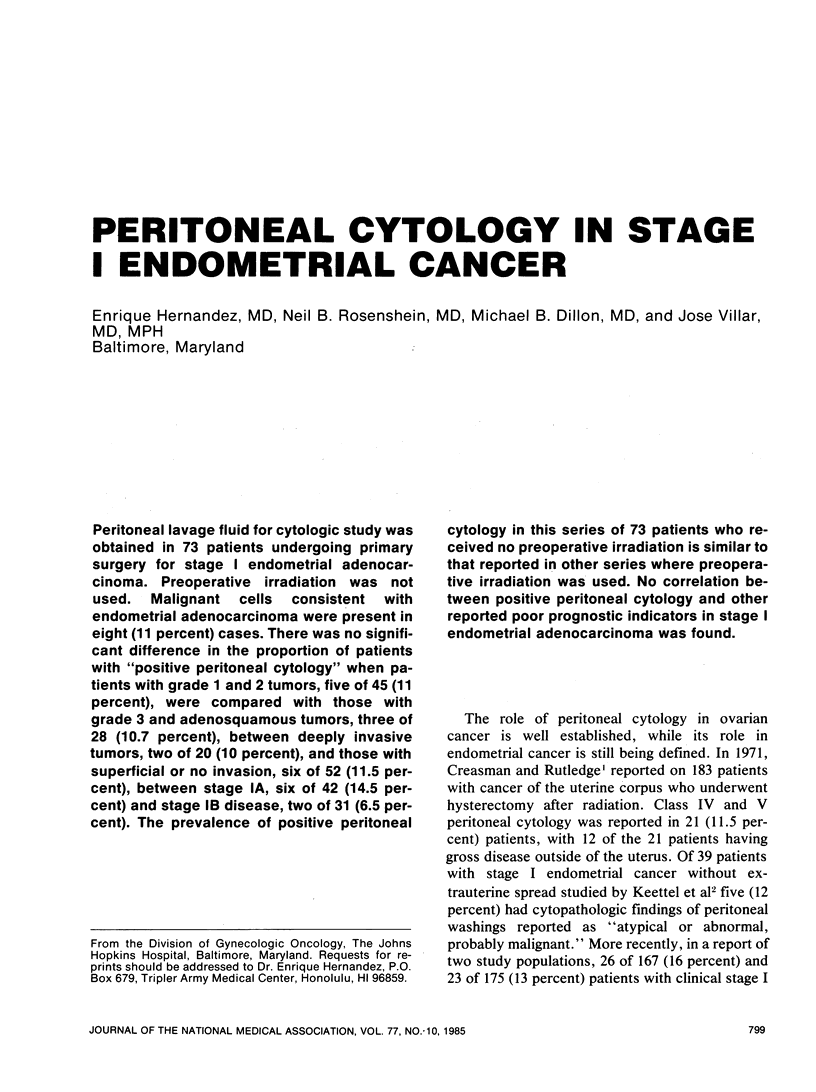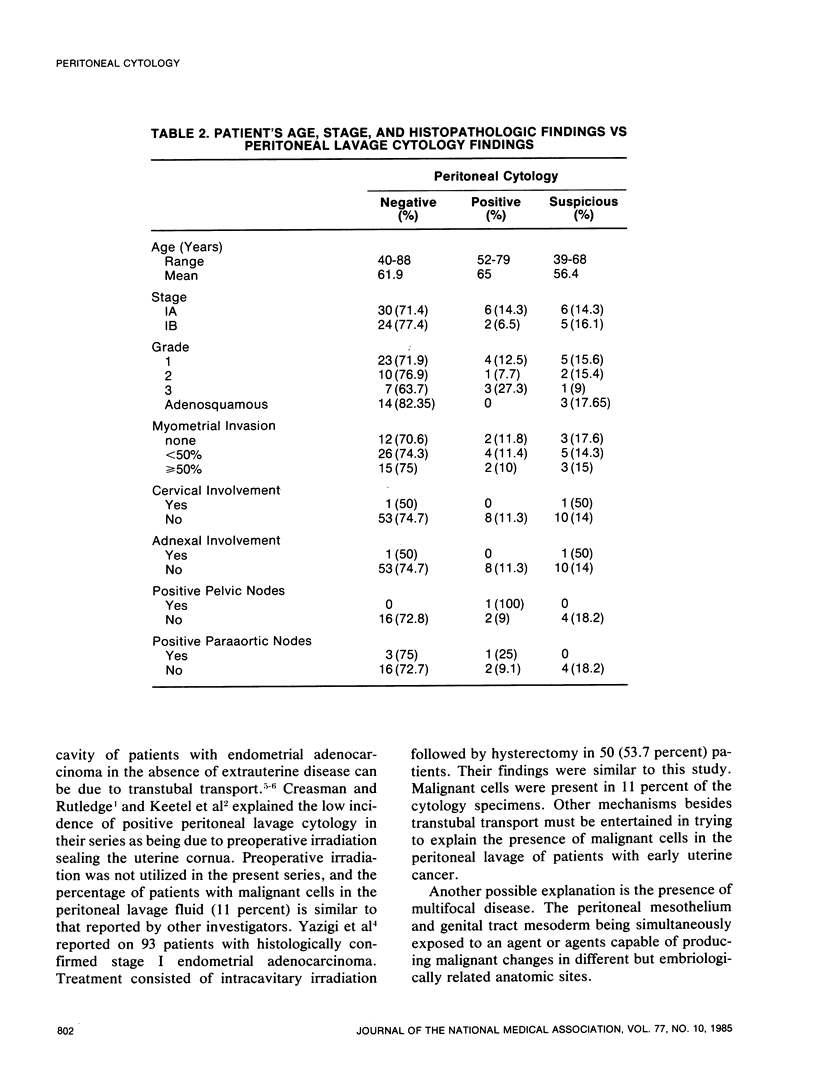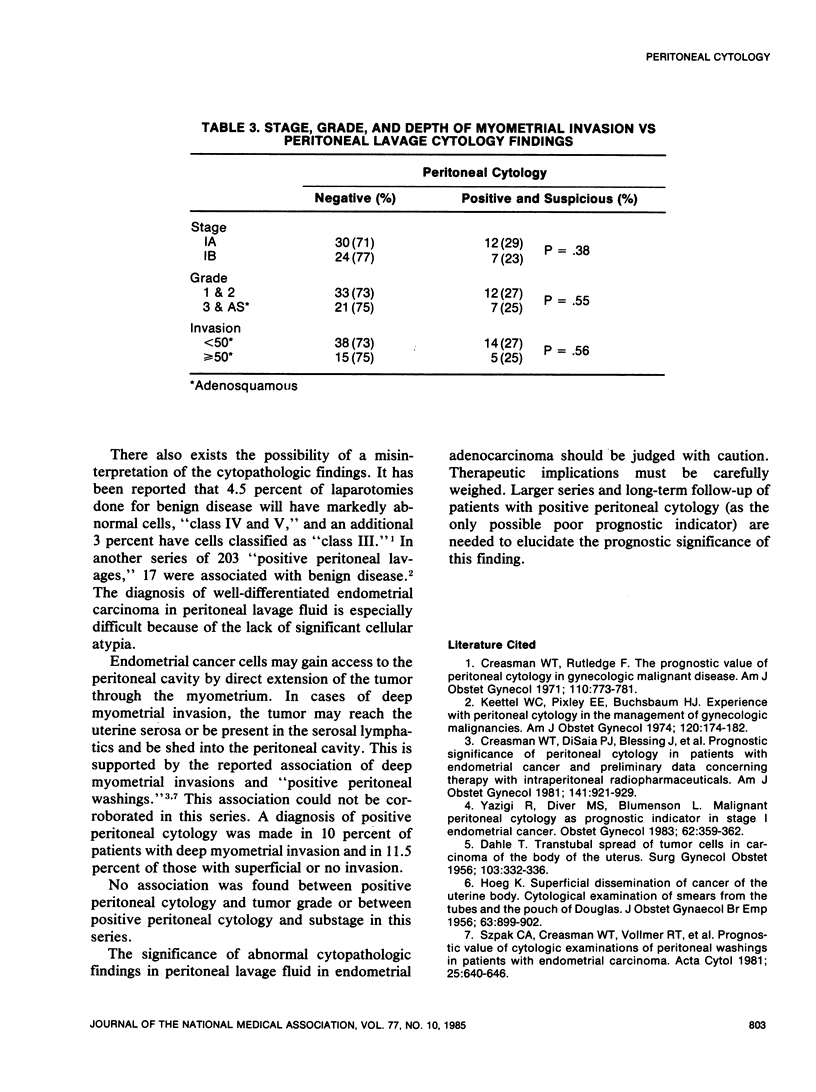Abstract
Peritoneal lavage fluid for cytologic study was obtained in 73 patients undergoing primary surgery for stage I endometrial adenocarcinoma. Preoperative irradiation was not used. Malignant cells consistent with endometrial adenocarcinoma were present in eight (11 percent) cases. There was no significant difference in the proportion of patients with “positive peritoneal cytology” when patients with grade 1 and 2 tumors, five of 45 (11 percent), were compared with those with grade 3 and adenosquamous tumors, three of 28 (10.7 percent), between deeply invasive tumors, two of 20 (10 percent), and those with superficial or no invasion, six of 52 (11.5 percent), between stage IA, six of 42 (14.5 percent) and stage IB disease, two of 31 (6.5 percent). The prevalence of positive peritoneal cytology in this series of 73 patients who received no preoperative irradiation is similar to that reported in other series where preoperative irradiation was used. No correlation between positive peritoneal cytology and other reported poor prognostic indicators in stage I endometrial adenocarcinoma was found.
Full text
PDF




Selected References
These references are in PubMed. This may not be the complete list of references from this article.
- Creasman W. T., Disaia P. J., Blessing J., Wilkinson R. H., Jr, Johnston W., Weed J. C., Jr Prognostic significance of peritoneal cytology in patients with endometrial cancer and preliminary data concerning therapy with intraperitoneal radiopharmaceuticals. Am J Obstet Gynecol. 1981 Dec 15;141(8):921–929. doi: 10.1016/s0002-9378(16)32684-9. [DOI] [PubMed] [Google Scholar]
- Creasman W. T., Rutledge F. The prognostic value of peritoneal cytology in gynecologic malignant disease. Am J Obstet Gynecol. 1971 Jul 15;110(6):773–781. doi: 10.1016/0002-9378(71)90571-0. [DOI] [PubMed] [Google Scholar]
- DAHLE T. Transtubal spread of tumor cells in carcinoma of the body of the uterus. Surg Gynecol Obstet. 1956 Sep;103(3):332–336. [PubMed] [Google Scholar]
- HOEG K. Superficial dissemination of cancer of the uterine body; cytological examination of smears from the tubes and the pouch of Douglas. J Obstet Gynaecol Br Emp. 1956 Dec;63(6):899–902. doi: 10.1111/j.1471-0528.1956.tb05585.x. [DOI] [PubMed] [Google Scholar]
- Keettel W. C., Pixley E. E., Buchsbaum H. J. Experience with peritoneal cytology in the management of gynecologic malignancies. Am J Obstet Gynecol. 1974 Sep 15;120(2):174–182. doi: 10.1016/0002-9378(74)90359-7. [DOI] [PubMed] [Google Scholar]
- Szpak C. A., Creasman W. T., Vollmer R. T., Johnston W. W. Prognostic value of cytologic examination of peritoneal washings in patients with endometrial carcinoma. Acta Cytol. 1981 Nov-Dec;25(6):640–646. [PubMed] [Google Scholar]
- Yazigi R., Piver M. S., Blumenson L. Malignant peritoneal cytology as prognostic indicator in stage I endometrial cancer. Obstet Gynecol. 1983 Sep;62(3):359–362. doi: 10.1097/00006250-198309000-00019. [DOI] [PubMed] [Google Scholar]


